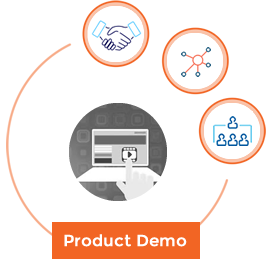The automotive supply chain is now faced with such issues as supply disruptions, quality problems, and erosion of customer trust, thereby increasing the stake for procurement leaders. Qualification of the supplier is more than an act; it is a dam against tarnishing the brand and disrupting the operational resilience.
Automobile manufacturers rely on suppliers—probably thousands of them—in their delivery of finely engineered vehicles. Among suppliers, there are no equals. If a supplier’s on-boarding is poor, or if the supplier has inadequate vetting, or does not comply with industry standards, it may lead to recalls, production shut-downs, or lost revenues.
Procurement risk management is the identification and management of supplier-related risks in a proactive manner with the intention of ensuring the protection of quality and continuity. That is why risk is assessed not only in terms of financial exposure.
Supplier Qualification Framework
To ensure supplier compliance in the automotive sector, leading firms use a tiered risk-based supplier classification system:
| Category | Description |
| Critical Suppliers | Directly affect the end product’s quality; few alternatives available. |
| High-Risk | Impact product quality; alternatives exist but with variable performance. |
| Medium-Risk | Important to the process but not on the critical path. |
| Low-Risk | Minimal influence on quality; lower operational risk. |
This framework helps procurement teams focus efforts on what matters most—ensuring high-quality, reliable inputs for vehicle production.
Real-World Example: Evaluating High-Risk Supplier Qualification
Here’s how a structured evaluation aids decision-making for high-risk suppliers:
| Shortlisted Suppliers | Success Criteria #1 | Success Criteria #2 | Success Criteria #3 |
|---|---|---|---|
| Supplier A | Exceeds Expectations | Meets Expectations | Meets Expectations |
| Supplier B | Below Expectations | Meets Expectations | Meets Expectations |
| Supplier C | Below Expectations | Below Expectations | Exceeds Expectations |
Based on this assessment, Supplier A seems like the clear choice because they consistently perform well across every category. This data-focused method helps auto companies evaluate suppliers not just by price, but also by their reliability and how well they meet compliance standards.
Driving Results with a Streamlined Approval Process
Some very important steps in an effective supplier approval include:
- Pre-qualification based on capability, certification, and financial qualification
- Test runs and sample evaluation as a means to measure actual production
- Regular audits and tracking of consultancy performance using KPIs
- Digital on-boarding workflows for tracking and acceleration
These streamline the on-boarding process while improving compliance and visibility across the procurement teams.
Why It Matters Now
As the regulatory scrutiny increases and customer expectations rise, suppliers can afford fewer mistakes than ever. Proper supplier qualification leads to:
- Less disruption to production
- More assurance of quality
- Faster realisation of new models in the market
- Greater compliance with ISO/TS 16949 and other automotive standards
Aura assists automotive companies by implementing intelligent systems for supplier on-boarding and qualification to suit the unique challenges of the industry.
Ready to improve your supplier qualification process? Let’s talk.
Frequently Asked Questions (FAQs)
1. Why is supplier qualification critical in the automotive industry?
Because poor-quality components or non-compliant suppliers can cause costly delays, recalls, and brand damage in a tightly regulated and quality-driven sector.
2. How do high-risk suppliers differ from critical suppliers?
High-risk suppliers affect product quality but have alternatives; critical suppliers are essential to core product quality with limited substitutes.
3. What are the key steps in a supplier approval process?
Initial screening, capability audits, sample testing, compliance verification, and continuous performance monitoring are key phases.





